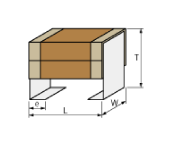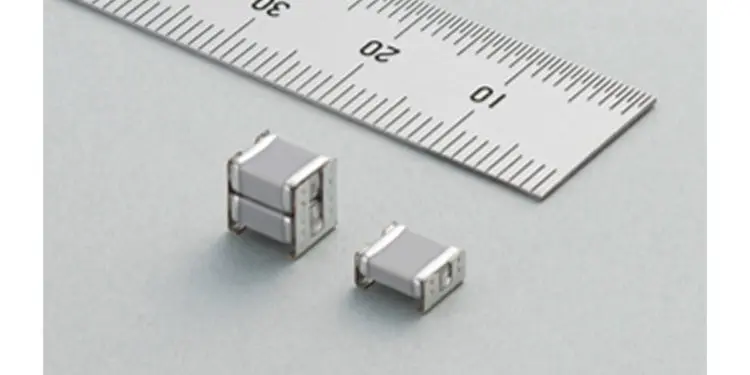Murata Manufacturing Co. Ltd. has introduced the KCM series of metal terminal type multilayer ceramic capacitors with temperature compensating U2J characteristics for automotive applications and the KRM series of metal terminal type multilayer ceramic capacitors for general-purpose applications. These products are primarily intended for IGBT snubber circuits used in automotive and industrial equipment. Mass production of this product is scheduled to start in May 2020.
A snubber circuit protects power supply equipment that utilizes switching devices such as IGBTs by preventing the occurrence of high-voltage spikes during switching.
The capacitor component in the snubber circuit absorbs surge voltage generated by the inductance of the transformer, wiring, etc., and this is why such circuits are used to protect switching elements and peripheral components. As the use of more compact internal modules providing enhanced functionality and SiC devices with superior heat tolerance characteristics becomes more widespread in automotive and industrial equipment, there is a growing need for electronic components that are smaller and capable of withstanding high temperatures.
The new MLCCs have lower loss and produce less heat than similar products using ceramic with a high dielectric constant. These metal terminal type multilayer ceramic capacitors use temperature compensating ceramic with minimal capacitance variation, making them ideal for use as components in snubber circuits that handle large voltages during switching and where compactness and heat tolerance are required. In addition, models rated at 1,250 VDC have been added to the product lineup, while no MLCCs with C0G characteristics are available with this rating. This broadens the range of available models in response to customer demand.
Product overview
| Automotive | General-purpose | |
| Part number (example) | KCM55T7U3A203KDL1# | KRM55T7U3A203KDL1# |
| Shape |  | |
| L Dimension | 6.1 ±0.4 mm | |
| W Dimension | 5.1 ±0.3 mm | |
| T Dimension | 4.8 ±0.4 mm | |
| Metal terminal width e | 0.9 ±0.2 mm |
Lineup
・Automotive
- Operating temperature range : -55 ~ +125℃
- Rated voltage : 630Vdc ~ 1000Vdc
- Capacitance : 8.2 ~ 94nF
- Temperature characteristics : U2J characteristics
・General-purpose
- Operating temperature range : -55 ~ +125℃
- Rated voltage : 630Vdc ~ 1250Vdc
- Capacitance : 8.2 ~ 94nF
- Temperature characteristics : U2J characteristics
| IGBT | : | Insulated Gate Bipolar Transistor. A type of power semiconductor device capable of withstanding high voltages and large currents. |
| SiC | : | Silicon carbide. A semiconductor material used in power devices that has excellent heat tolerance. |































